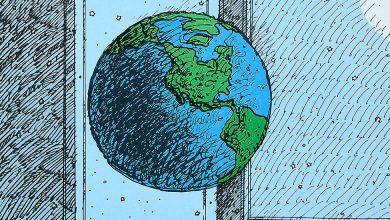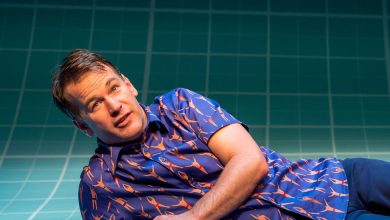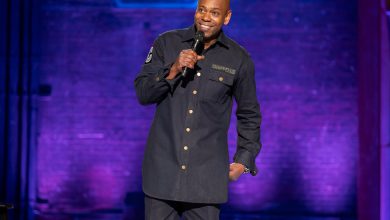Daddy Yankee, Reggaeton’s First Global Star, Steps Aside

Plunge into the recesses of YouTube, and you’ll find a video of Daddy Yankee performing live in his late teens, wearing a silver zip-up windbreaker and a creeping caterpillar mustache. It was 1996, and the future global ambassador of reggaeton freestyled a cappella to a crowd of hundreds. He flaunted a breathless flow with touches of Patois intonation, a signature of the time, when the genre “underground” — a predecessor to reggaeton — was flourishing. The D.J. dropped a beat, chopping drum breaks and syncopated dembow riddims. Yankee effortlessly kept up, brandishing the hyperspeed raps that would make him a superstar in the next decade.
Daddy Yankee, cherub-cheeked and about 19, grew into a reggaeton kingpin, a pop star and a tycoon, helping transform a street sound into an industry cash cow. In 2004, he announced his ascent into the mainstream with a strategic and simple opening statement: “Who’s this? Da-ddy Yan-kee!” A little over a decade later, he rode the acoustic guitar strums and liquefied, popeton beat of “Despacito” into vexing, international ubiquity.
But after a 32-year career, is it time for Yankee to rest on his laurels? In a sentimental video posted on March 20, the Big Boss announced his retirement from the music industry. There is one victory lap left: a final tour and an impeccably titled album, “Legendaddy.”
Retirement albums can be tricky. Some artists misguidedly ride recent trends in an attempt to reproduce the aesthetics of a younger generation; others reprise the tricks that made them famous in the first place; the most successful dare to bare their souls and create new intimacy with listeners.
Yankee, 45, has never really been one for profound personal vulnerability. He was, however, always honest about his youth in the Villa Kennedy caseríos, or housing projects, in San Juan, where he and DJ Playero, another reggaeton pioneer, tinkered with reggae en español and freestyling, and distributed their experiments on mixtapes in the early ’90s. When Yankee was 16, a bullet lodged in his right leg, a souvenir of crossfire outside Playero’s studio one afternoon. It forced him into over a year of recovery, closed the door on his major league baseball ambitions and refocused his energies toward music.
As underground, and later reggaeton, sprawled, Yankee fine-tuned the art of merging sex and bombast in song. Harnessing street swagger and dirty talk, he leveraged his breakneck rap flows into carnal dance floor anthems, like “Latigazo” from 2002 or his 2004 smash “Gasolina.” These became the songs that taught an entire diaspora about sex and the ecstasy of a perreo sucio, the kind of grinding that involves exchanging denim dye and sweat with a dance partner.
There have been sporadic moments of social commentary in Yankee’s music, as on the theatrical blockbuster album “Barrio Fino.” But after “Gasolina” engulfed the Anglo mainstream, his celebrity grew and he swapped his prurient playboy image for that of a wealthy mogul: In 2005 alone, he inked a brand partnership with Reebok to design sneakers, apparel and accessories; agreed to model for Sean Jean’s spring collection; landed an endorsement contract with Pepsi; and signed a $20 million, five-album deal with Interscope Records.
While Yankee settled into his role as a reggaeton capitalist, his mid-00s success also felt like affirmation for a generation of youth of the Caribbean diaspora. Reggaeton was the first music that was fully ours — fresh, raw, exhilarating, sensual. It brought us closer to the islands that birthed us, moving us toward some wistful dream of wholeness instead of constant loss.
In the early and mid-2010s, Yankee released a spate of albums, but many of them lacked dimension and verve, relying on unimaginative commercial tropes. Around 2016, he started dabbling with two ascendant sounds: the first crest of EDM-reggaeton fusions, and the nascent genre of Latin trap, in which he became an in-demand featured guest. Both allowed him to remain in the spotlight, embrace his image as an elder statesman and avoid competing with a new wave of artists who were refreshing the movement with sentimentality and grit.
For “Legendaddy,” his first solo album in a decade, El Cangri has inventoried the sounds and styles that have defined his career: self-mythologizing rap, perreo, EDM and popeton. The most dynamic moments come when Yankee reaches for the magic of the past — whether indulging in boastful hubris or summoning listeners into dance floor reverie. “Uno Quitao y Otro Puesto” is a corrosively effective blast of late-career posturing, complete with gunshot accents à la “Sácala.” On “Enchuletiao,” Yankee doesn’t rap, he barks a flood of bars about his unrivaled eminence in the genre, delivered through gritted teeth. “¿Qué tú me va’ a enseñar, si yo he esta’o en to’a las era’?” he says. “What are you gonna teach me, if I’ve been in all of the eras?” It’s a reminder of his technical skills — he hasn’t sounded this electric, this deliciously abrasive in years.
With their stadium-sized trumpets and vibrant piano lines, “Rumbatón” and “El Abusador del Abusador” are thrilling, nostalgic callbacks to the salsa-reggaeton fusions of the mid-00s (fittingly, Luny of the duo Luny Tunes produced “Rumbatón”). “Remix” and “Bloke” are classic reggaeton romps, harnessing the kind of sexual fantasies and salacious exchanges that once made the sound so irresistible; the first even includes a reference to the Big Boss’s 2007 track “Impacto.”
Yet a good portion of the songs follow prosaic, predictable pop formats: “Para Siempre” weaves acoustic guitar textures into a bland, mid-tempo popeton ballad, while “La Ola” and “Zona del Perreo” almost sound like they were engineered for Spotify’s “Viva Latino” playlist. “Pasatiempo,” with Myke Towers, lands primarily because of its interpolation of Robyn S’s “Show Me Love.” Sampling universally beloved bangers is a method Yankee has been unafraid to employ in the past (i.e., “Con Calma”), and it works here yet again.
“Legendaddy” also has some egregious missteps: two EDM fusions, the globally popular style that has recently had a grip on the Latin charts. “Bombón,” featuring Lil Jon and the dembow visionary El Alfa, is virtually unlistenable — college spring-break music, complete with “Yeah!” ad-libs from an era long gone. “Hot,” which is dominated by its Pitbull feature, is essentially a caricature of Miami nightclub fare.
Yankee does leave space for one refreshing moment of adventure with “Agua.” The track, a collaboration with Nile Rodgers and the reggaeton star Rauw Alejandro, is sparkling disco pop gloss, complete with groovy guitar riffs from the Chic legend.
As a farewell album, “Legendaddy” honors all the styles of Yankee’s trajectory, highlighting the superpower that has enabled him to survive as a senior figure in a young artist’s game: flexibility. And in that way, the album also mirrors the history of reggaeton itself: a sound that is now unrecognizable from its political, grass-roots beginnings, and one whose history implies constant transformation.
There is always the chance that Yankee will return on some kind of comeback tour, as plenty of hip-hop giants have done after bowing out. Yankee got his flowers while he was still around, and his indelible impact cannot be understated. But “Legendaddy” also speaks volumes about what reggaeton needs more of in this moment: fresh blood, unorthodox aesthetics and storytelling world-builders seeking to inject the genre with the euphoria, fireworks and narrative depth the movement has promised since its inception.





